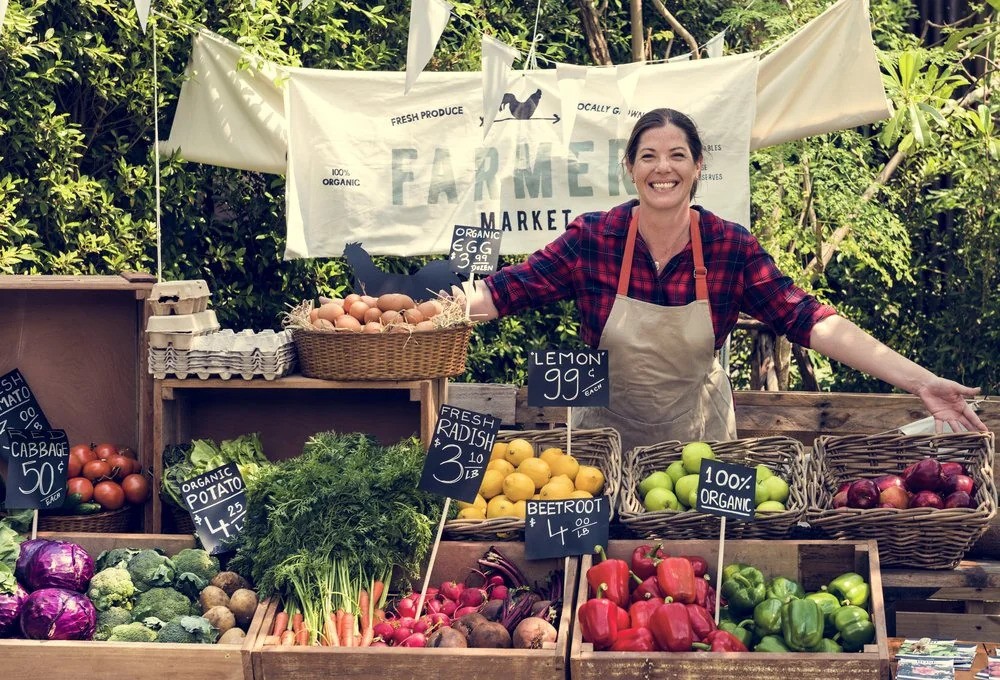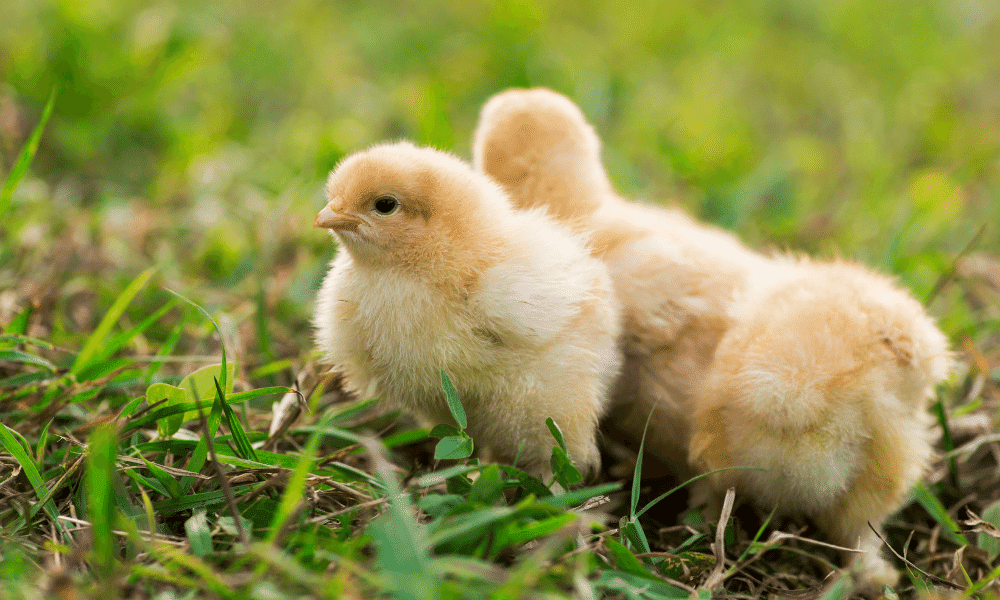Maximizing Space: The Benefits of Vertical Gardening
Introduction to Vertical Gardening
In the world of gardening, space is a precious commodity. Whether you're working with a tiny apartment balcony or a sprawling backyard, finding ways to maximize space while still enjoying the beauty and benefits of gardening can be a challenge. This is where vertical gardening comes into play!
What is vertical gardening?
Vertical gardening is a technique that involves growing plants upwards rather than outwards. By utilizing walls, trellises, and other vertical structures, gardeners can make the most of their available space, both indoors and outdoors. In this article, we'll explore the numerous benefits of vertical gardening and provide tips and techniques for creating your own vertical garden oasis.
Maximizing Space Indoors and Outdoors With Vertical Gardening
Vertical gardening is a clever technique that makes the most of both indoor and outdoor spaces by encouraging plants to grow upwards instead of sprawling out horizontally. By understanding how vertical gardening works in different environments, we can truly appreciate its remarkable ability to maximize space.
Indoor Vertical Gardening
Indoor vertical gardening offers a fantastic way to bring the beauty of nature into your living spaces. Instead of letting walls, shelves, and ceilings sit empty, you can transform them into vibrant green areas. Here's how it works:
Vertical Structures: You can use wall-mounted planters, hanging baskets, a tower garden, or stacked shelves to create vertical growing space. By utilizing the often-underutilized vertical space in your home, apartment, or office, you can cultivate plants in areas where traditional gardening methods would be impractical.
Light Considerations: When it comes to indoor gardening, light is a crucial factor. Sometimes, natural sunlight may be limited, especially in urban environments or rooms with few windows. That's why many gardeners opt to supplement with artificial grow lights. LED or fluorescent lights can provide the necessary spectrum for plant growth, ensuring that your vertically positioned plants receive adequate light for photosynthesis.
Humidity and Air Circulation: In indoor environments, the natural humidity and air circulation found outdoors might be lacking. To create an optimal growing environment for your indoor vertical garden, regular misting or the use of humidifiers can help maintain the right levels of humidity. Additionally, fans or gentle air circulation systems can prevent stagnant air and promote healthy plant growth.
Plant Selection: Choosing the right plants is key to your indoor vertical gardening success. Compact varieties of herbs, leafy greens, and trailing vines are popular choices due to their ability to thrive in confined spaces. Succulents and air plants are also well-suited to vertical environments and can add texture and visual interest to your indoor gardens.
Outdoor Vertical Gardening
Outdoor vertical gardening takes advantage of natural sunlight and weather conditions to create stunning green spaces in gardens, balconies, and patios. Here's how it differs:
Structural Diversity: One of the great advantages of outdoor vertical gardening is the wide range of vertical structures you can choose from. Whether it's trellises, arbors, or pergolas, these structures not only provide support for climbing plants but also add a touch of architectural beauty to your garden.
Sunlight Accessibility: Natural sunlight is another bonus of outdoor vertical gardens. With ample sunlight, your plants can thrive and photosynthesize without the need for artificial lighting. By strategically positioning your vertical structures, you can ensure that your sun-loving plants get the maximum exposure they need, while also providing shade for more delicate varieties.
Weather Resilience: When it comes to weather resilience, outdoor vertical gardens need to withstand the elements, such as wind, rain, and temperature fluctuations. To ensure the longevity of your vertical structures, it's important to choose durable materials like weather-resistant wood, metal, or plastic. This way, your garden will remain sturdy and functional throughout the year.
Seasonal Adaptability: One of the great things about outdoor vertical gardening is its seasonal adaptability. You have the flexibility to change your garden's look as the seasons change. Whether you want to swap out annual plants or incorporate seasonal blooms, your vertical garden can stay vibrant and colorful all year round. You can even include edible crops like tomatoes, cucumbers, and peppers in your outdoor vertical garden, giving you a bountiful harvest right at home.
Marketplace
You might also be interested in...

Shop for chickens, livestock or other farm goods

About Farm Expo Events

Sell Your Chicks and Eggs
Benefits of Vertical Gardening 🌱
Vertical gardening offers a multitude of advantages that make it an appealing option for gardeners of all levels of experience. Here are some key benefits:
Utilization of Small or Limited Spaces: One of the most significant advantages of vertical gardening is its ability to make efficient use of limited space. Whether you've got a tiny balcony, compact patio, or even a limited indoor area - vertical gardening lets you play smart with your space. It's perfect for city folks or anyone with small outdoor areas, allowing you to adopt a green lifestyle even when traditional gardening isn't possible.
Increased Yields per Square Foot: By growing plants upwards rather than outwards, vertical gardens can accommodate more plants in a smaller area, resulting in a greater harvest overall. This is especially advantageous for those with limited space or for gardeners looking to maximize their productivity in a smaller garden plot.
Reduction of Soil Erosion and Water Runoff: Vertical gardening helps to mitigate soil erosion and water runoff by keeping soil contained within planters or containers. Unlike traditional gardens where rainwater can wash away valuable topsoil and nutrients, vertical gardens retain soil and moisture more effectively, promoting healthier plant growth and reducing the risk of erosion. Additionally, vertical gardens can be designed with built-in irrigation systems or self-watering mechanisms, further minimizing water waste and runoff.
Enhanced Accessibility for Gardening in Urban Environments: Vertical gardening provides an accessible and practical solution for gardening in urban environments where space is limited. Whether you live in a high-rise apartment or a densely populated neighborhood, vertical gardening allows you to cultivate plants in a variety of indoor and outdoor spaces, from balconies and rooftops to walls and fences. This accessibility not only enables urban dwellers to enjoy the benefits of gardening but also contributes to greener and more sustainable urban landscapes overall.
Vertical Gardening Techniques
Vertical gardening encompasses a variety of innovative techniques and structures that allow gardeners to make the most of vertical space.
Trellises and Arbors
Trellises and arbors are traditional yet effective vertical gardening structures that provide support for climbing plants. These structures consist of vertical posts with horizontal crosspieces, creating a framework for plants to climb and vine.
Trellises and arbors are commonly used for growing crops like tomatoes, cucumbers, and beans, as well as flowering vines and ornamental climbers. Their versatility and aesthetic appeal make them a popular choice for both outdoor gardens and indoor spaces.
Pros:
Provide support for climbing plants, maximizing vertical space.
Versatile and aesthetically appealing, suitable for both outdoor gardens and indoor spaces.
Can be used for growing a variety of crops like tomatoes, cucumbers, beans, and ornamental climbers.
Create a visually pleasing backdrop and can add architectural interest to gardens.
Cons:
Require installation and may need regular maintenance such as cleaning and painting.
Depending on the material and design, can be relatively expensive compared to other vertical gardening options.
May take some time for plants to establish and climb the trellis or arbor, requiring patience and careful maintenance.
Wall-Mounted Planters
Wall-mounted planters are a stylish and space-saving solution for vertical gardening. Vertical garden planters are designed to be mounted on walls, fences, or other vertical surfaces, allowing gardeners to create living walls of greenery.
Wall-mounted planters come in a variety of materials, shapes, and sizes, making them suitable for a wide range of plants and design preferences. They are particularly well-suited for herbs, succulents, and trailing plants, adding visual interest and natural beauty to any indoor or outdoor space.
Pros:
Stylish and space-saving solution for vertical gardening, suitable for both indoor and outdoor spaces.
Can be easily mounted on walls, fences, or other vertical surfaces, maximizing growing space.
Available in a variety of materials, shapes, and sizes, catering to different plant types and design preferences.
Ideal for growing herbs, succulents, and trailing plants, adding visual interest and natural beauty to any space.
Cons:
Require proper installation to ensure stability and prevent damage to walls or surfaces.
May have limited soil capacity, requiring more frequent watering and maintenance.
Depending on the weight and size of the planters, may not be suitable for all wall types or surfaces.
Can be challenging to access and care for plants in high-mounted or hard-to-reach planters.
Tower Gardens
Tower gardens are a top choice for vertical garden planters. These unique grow towers are made of stackable planters, which is a great way to make the most of your space without needing a lot of room. A vertical garden tower can be ideal for urban residents and apartment dwellers who want to maximize their green space. The tiered planters are often made from a plastic-like material, so they can be more easily transported to different locations compared to wooden options.
This is a great option for a vertical vegetable garden! With various sizes and designs to choose from, plant tower gardens allow you to grow a wide variety of herbs, leafy greens, and petite vegetables all in one streamlined structure. Plus, they typically come equipped with integrated irrigation systems, so you can enjoy fresh produce year-round right at home.
Popular tower garden brands: Tower Garden, GreenStalk Planter, Gardyn
Pros:
Efficient use of vertical space allows gardeners to grow a wide variety of herbs, leafy greens, and vegetables in a compact footprint.
Suitable for urban residents and apartment dwellers with limited outdoor space.
Easy to set up and maintain, with integrated irrigation systems and efficient nutrient delivery mechanisms.
Portable and lightweight vertical planter compared to wooden options, making them ideal for renters or those who frequently move.
Cons:
Limited soil depth in the tower garden planter may restrict the types of plants that can be grown.
Require careful monitoring of water and nutrient levels to ensure optimal plant growth.
The vertical garden planter initial cost may be higher compared to traditional gardening methods or DIY vertical garden solutions.
Depending on the design and material, a tower garden may not provide the same natural, organic aesthetic appeal as other vertical gardening options.
Hanging Baskets and Containers
Hanging baskets and containers are versatile options for vertical gardening, allowing gardeners to suspend plants from overhead structures. These containers come in a variety of shapes, sizes, and materials, ranging from traditional hanging baskets to modern hanging planters and decorative containers.
Hanging baskets and containers are ideal for trailing plants, ferns, and flowering species, adding depth and dimension to vertical gardens. They are commonly used in outdoor spaces such as balconies, patios, and porches, as well as indoor areas with limited floor space.
Pros:
Versatile option for vertical gardening, suitable for both indoor and outdoor spaces.
Can be easily suspended from overhead structures, maximizing vertical growing space.
Ideal for trailing plants, ferns, and flowering species, adding depth and dimension to vertical gardens.
Offer flexibility in terms of placement and arrangement, allowing for creative design possibilities.
Cons:
Require sturdy support and proper installation to prevent tipping or damage to structures.
May have limited soil capacity, requiring more frequent watering and maintenance.
Need to be carefully balanced to ensure even growth and prevent overloading.
May be challenging to access and care for plants in high-hanging baskets or hard-to-reach locations.
Picking the Right Plants for Vertical Gardening 🌿
When choosing plants for your vertical garden, it's essential to select varieties that are well-suited to vertical growth. Look for plants that naturally climb or trail, such as peas, beans, cucumbers, tomatoes, and squash. These plants will thrive in a vertical environment and are more likely to adapt to growing upwards rather than outwards.
Consider the specific growing conditions of your vertical garden, such as light exposure, humidity levels, and available space. Choose plants that are compatible with these conditions to ensure optimal growth and productivity.
For Sunny Locations: Opt for sun-loving herbs and vegetables like basil, thyme, cherry tomatoes, peppers, and pole beans. These plants thrive in full sunlight and will produce abundant harvests when provided with at least 6-8 hours of direct sunlight each day.
For Shady Areas: Choose shade-tolerant plants such as ferns, pothos, spider plants, and begonias. These plants are well-suited to indoor vertical gardens or outdoor spaces with limited sunlight, making them ideal for balconies or patios shaded by buildings or trees.
For Compact Spaces: Select compact or dwarf varieties of plants to maximize space in your vertical garden. Examples include bush beans, dwarf zucchini, compact cherry tomatoes, and patio cucumbers. These varieties require less space to grow but still produce bountiful harvests, making them perfect for small gardens or containers.
FAQ: Vertical Gardening
-
Vertical gardening is a technique that involves growing plants upwards rather than outwards. By utilizing walls, trellises, and other vertical structures, gardeners can make the most of their available space, both indoors and outdoors.
-
Vertical gardening offers numerous benefits, including utilization of small or limited spaces, increased yields per square foot, reduction of soil erosion and water runoff, and enhanced accessibility for gardening in urban environments.
-
Plants that naturally climb or trail are ideal for vertical gardening. Examples include peas, beans, cucumbers, tomatoes, squash, herbs, leafy greens, and trailing vines. It's essential to choose plants that are compatible with your specific growing conditions, such as light exposure and available space.
-
Plants with sprawling growth habits, deep root systems, heavy feeding requirements, spreading growth habits, or high maintenance needs may not be suitable for vertical gardening. Examples include large or vigorous vines like large pumpkins and watermelons, deep-rooted plants like carrots and potatoes, and high-maintenance species requiring specialized care.
-
When selecting plants for your vertical garden, consider factors such as light exposure, humidity levels, available space, and the mature size and growth habit of the plants. Choose varieties that are well-suited to vertical growth and compatible with your specific growing conditions to ensure optimal growth and productivity.
-
Popular options for vertical gardening structures include trellises, arbors, wall-mounted planters, tower gardens, and hanging baskets or containers. Each structure offers unique advantages and opportunities for creative expression, allowing gardeners to maximize space and cultivate thriving gardens in any environment.
You might also be interested in…


















Discover farmers markets near you with Roobeez! Explore local events, find seasonal and weekly markets, and shop fresh produce and handmade goods on our marketplace. Contribute to our growing directory by adding your favorite markets and community events. Supporting local has never been easier!